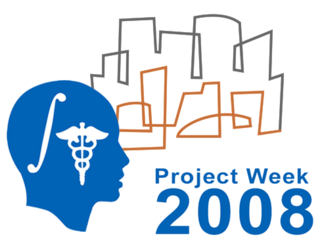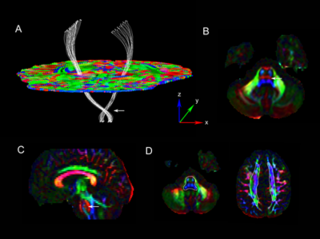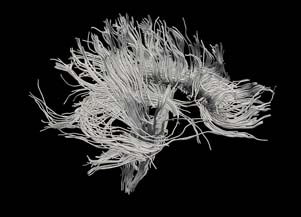Difference between revisions of "2008 Summer Project Week:FluidMechanicsTractographyUCLA"
(New page: {| |thumb|320px|Return to [[2008_Summer_Project_Week|Project Week Main Page ]] |[[Image:Hageman_cspfig4NAMIC_07-06-22.png|thumb|320px|Corticospinal tracts se...) |
|||
| (14 intermediate revisions by the same user not shown) | |||
| Line 2: | Line 2: | ||
|[[Image:ProjectWeek-2008.png|thumb|320px|Return to [[2008_Summer_Project_Week|Project Week Main Page]] ]] | |[[Image:ProjectWeek-2008.png|thumb|320px|Return to [[2008_Summer_Project_Week|Project Week Main Page]] ]] | ||
|[[Image:Hageman_cspfig4NAMIC_07-06-22.png|thumb|320px|Corticospinal tracts segmented using our fluid mechanics based tractography method.]] | |[[Image:Hageman_cspfig4NAMIC_07-06-22.png|thumb|320px|Corticospinal tracts segmented using our fluid mechanics based tractography method.]] | ||
| + | |[[Image:Hageman_FullBrainSlicerTractography.jpg|thumb|320px|Full brain tracts segmented using multiple fluid sources/sinks.]] | ||
|} | |} | ||
| Line 9: | Line 10: | ||
* UCLA: Nathan Hageman | * UCLA: Nathan Hageman | ||
* UCLA: Arthur Toga, Ph.D | * UCLA: Arthur Toga, Ph.D | ||
| − | |||
<div style="margin: 20px;"> | <div style="margin: 20px;"> | ||
| Line 16: | Line 16: | ||
<h1>Objective</h1> | <h1>Objective</h1> | ||
| − | + | Computational fluid dynamics is a rich field and its application to the analysis of diffusion tensor imaging (DTI) datasets has yielded possible applications to tractography, image registration, and white matter pathology. We are developing several useful and novel diffusion tensor imaging (DTI) analysis algorithms modeled on the principles of fluid mechanics for inclusion within the NA-MIC framework. The goal of this project is to develop these methods, make them compatible with the NA-MIC ITK-based software infrastructure (i.e. Slicer), and promote their dissemination to the scientific community. | |
| + | |||
| + | See our [[hageman:NAMICFluidMechDTITractography|Project Page]] for more information. | ||
</div> | </div> | ||
| Line 23: | Line 25: | ||
<h1>Approach, Plan</h1> | <h1>Approach, Plan</h1> | ||
| − | + | We have developed and initially validated a DTI tractography method based on Navier-Stokes fluid mechanics. See the papers listed in the reference section for complete details on the method. Our approach for this project week will focus on the following: | |
| − | + | * Building the our current CL Slicer module into an interactive GUI in Slicer 3. Our method is currently integrated as a CL Slicer module in a custom build of Slicer 3. The module has the following functionalities: | |
| + | **reconstruction of the diffusion tensor and computation of common DTI scalar volumes (FA, LI, RGB). In addition, if users prefer using their own tensor reconstruction methods, the module can be run with any arbitrary set of tensor volumes. | ||
| + | **computation of fluid velocity vector field volume | ||
| + | **reconstruction of tracts based on the above fluid velocity volume | ||
| + | ** Optimizing initial coding of method in ITK (better use of multithreading) | ||
| + | ** Specialized visualization using VTK: | ||
| + | *** Fluid velocity vector field animation | ||
| + | *** Layout for Slicer 3 Plug-in | ||
| + | *** Interactive (real-time) manipulation of sources/sinks (ROIs) on steady-state fluid solution (possible application for intra-operative DTI) | ||
| + | * Working with the interested groups in analyzing control and white matter pathology data. Specifically, we have seen promising results when looking at the flow perturbation around white matter lesions seen in multiple sclerosis or stroke that may suggest a novel method for automatic lesion detection in DTI. | ||
</div> | </div> | ||
| Line 30: | Line 41: | ||
<h1>Progress</h1> | <h1>Progress</h1> | ||
| + | * Pre-computed implementation of fluid animation in VTK successful. We will now streamline the method for real time animation. | ||
| + | * Layout for Slicer 3 plugin complete. We will include analysis and GUI code in Slicer code repository after final validation. | ||
| + | * Initial analysis of lupus lesion data from MIND institute completed but noise from data has created too many false positive vortices. We will work to make our method more robust. | ||
| − | |||
| − | |||
| − | |||
| − | |||
| − | |||
| − | |||
</div> | </div> | ||
| Line 43: | Line 51: | ||
</div> | </div> | ||
| − | |||
===References=== | ===References=== | ||
| − | * NS | + | * Hageman NS, Shattuck DW, Narr K, Toga AW (2006). A diffusion tensor imaging tractography method based on Navier-Stokes fluid mechanics. Proceedings of the 2006 IEEE International Symposium on Biomedical Imaging: From Nano to Macro (ISBI 2006), Arlington, VA, USA, 6-9 April 2006. p. 798-801 |
| + | * Hageman NS, Toga AW, Narr K, Shattuck DW (2008). A diffusion tensor imaging tractography algorithm based on Navier-Stokes fluid mechanics. IEEE Trans. in Medicial Imaging, In Submission. | ||
| + | * Hamilton L, Nuechterlein K, Hageman NS, Woods R, Asarnow R, Alger J, Gaser C, Toga AW, Narr K (2008). Mean Diffusivity and Fractional Anisotropy as Indicators of Schizophrenia and Genetic Vulnerability, Neuroimage, In Submission. | ||
Latest revision as of 23:58, 26 June 2008
Home < 2008 Summer Project Week:FluidMechanicsTractographyUCLA Return to Project Week Main Page |
Key Investigators
- UCLA: Nathan Hageman
- UCLA: Arthur Toga, Ph.D
Objective
Computational fluid dynamics is a rich field and its application to the analysis of diffusion tensor imaging (DTI) datasets has yielded possible applications to tractography, image registration, and white matter pathology. We are developing several useful and novel diffusion tensor imaging (DTI) analysis algorithms modeled on the principles of fluid mechanics for inclusion within the NA-MIC framework. The goal of this project is to develop these methods, make them compatible with the NA-MIC ITK-based software infrastructure (i.e. Slicer), and promote their dissemination to the scientific community.
See our Project Page for more information.
Approach, Plan
We have developed and initially validated a DTI tractography method based on Navier-Stokes fluid mechanics. See the papers listed in the reference section for complete details on the method. Our approach for this project week will focus on the following:
- Building the our current CL Slicer module into an interactive GUI in Slicer 3. Our method is currently integrated as a CL Slicer module in a custom build of Slicer 3. The module has the following functionalities:
- reconstruction of the diffusion tensor and computation of common DTI scalar volumes (FA, LI, RGB). In addition, if users prefer using their own tensor reconstruction methods, the module can be run with any arbitrary set of tensor volumes.
- computation of fluid velocity vector field volume
- reconstruction of tracts based on the above fluid velocity volume
- Optimizing initial coding of method in ITK (better use of multithreading)
- Specialized visualization using VTK:
- Fluid velocity vector field animation
- Layout for Slicer 3 Plug-in
- Interactive (real-time) manipulation of sources/sinks (ROIs) on steady-state fluid solution (possible application for intra-operative DTI)
- Working with the interested groups in analyzing control and white matter pathology data. Specifically, we have seen promising results when looking at the flow perturbation around white matter lesions seen in multiple sclerosis or stroke that may suggest a novel method for automatic lesion detection in DTI.
Progress
- Pre-computed implementation of fluid animation in VTK successful. We will now streamline the method for real time animation.
- Layout for Slicer 3 plugin complete. We will include analysis and GUI code in Slicer code repository after final validation.
- Initial analysis of lupus lesion data from MIND institute completed but noise from data has created too many false positive vortices. We will work to make our method more robust.
References
- Hageman NS, Shattuck DW, Narr K, Toga AW (2006). A diffusion tensor imaging tractography method based on Navier-Stokes fluid mechanics. Proceedings of the 2006 IEEE International Symposium on Biomedical Imaging: From Nano to Macro (ISBI 2006), Arlington, VA, USA, 6-9 April 2006. p. 798-801
- Hageman NS, Toga AW, Narr K, Shattuck DW (2008). A diffusion tensor imaging tractography algorithm based on Navier-Stokes fluid mechanics. IEEE Trans. in Medicial Imaging, In Submission.
- Hamilton L, Nuechterlein K, Hageman NS, Woods R, Asarnow R, Alger J, Gaser C, Toga AW, Narr K (2008). Mean Diffusivity and Fractional Anisotropy as Indicators of Schizophrenia and Genetic Vulnerability, Neuroimage, In Submission.

